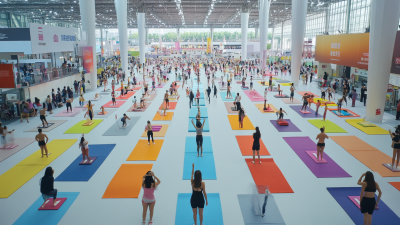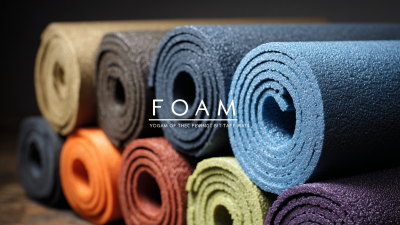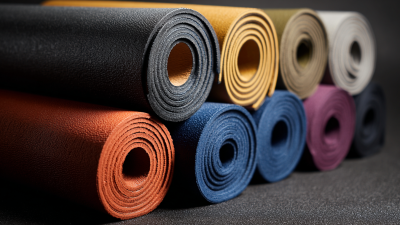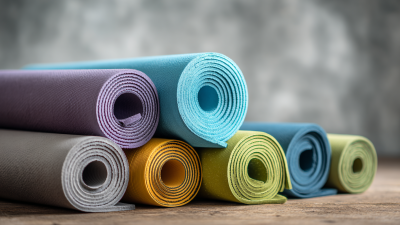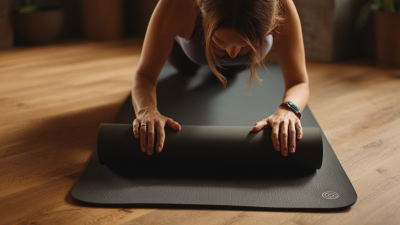When selecting a yoga mat, the decision can significantly impact your practice, especially when it comes to the type of material used. According to a recent report by the Yoga Alliance, 62% of yoga practitioners prioritize mat quality for both performance and safety. Among the various options available, the Rubber Yoga Mat stands out due to its natural properties, providing superior grip and durability, which are essential for a stable practice.
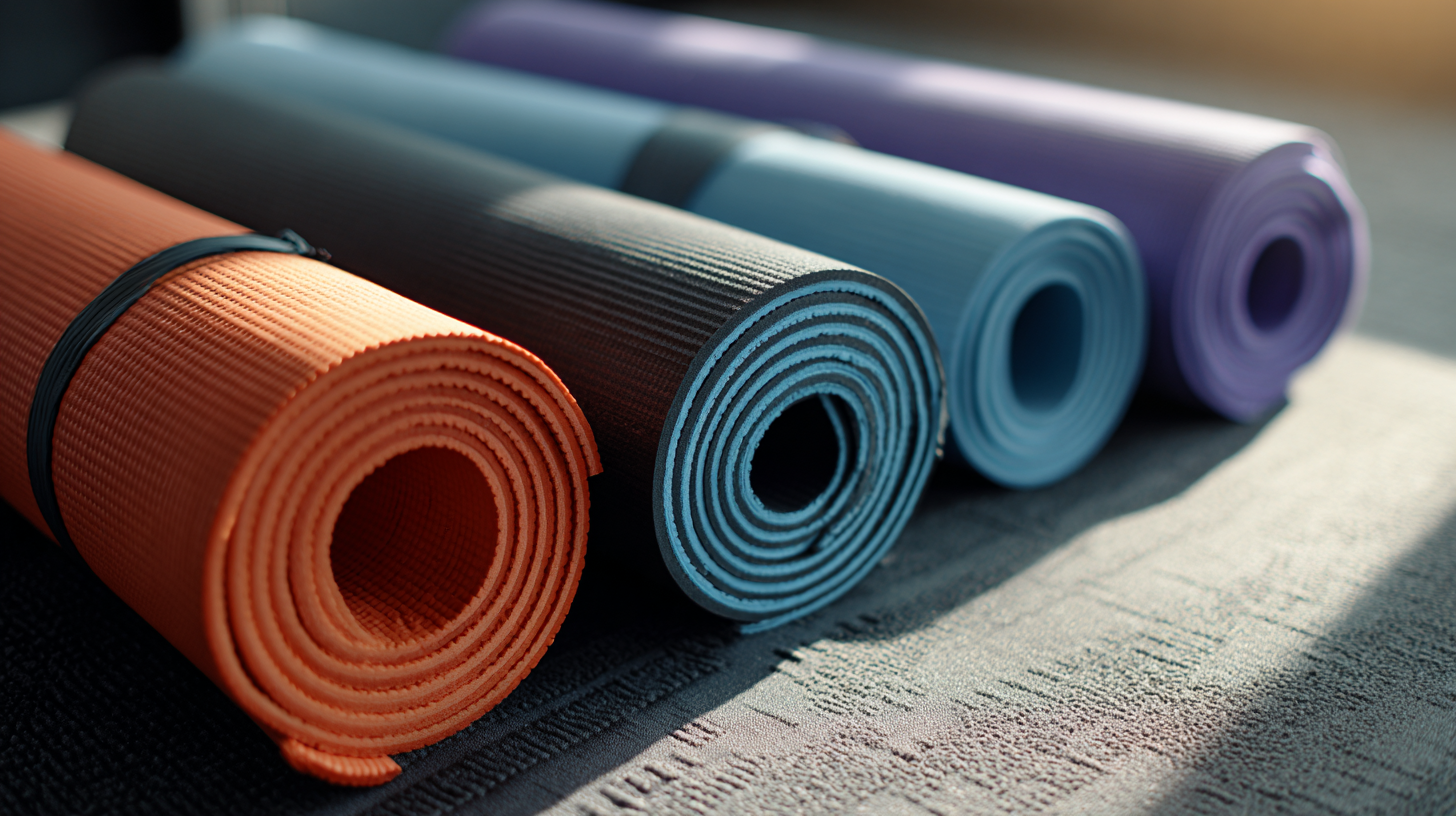
Studies indicate that a well-chosen mat can enhance the overall yoga experience, reducing the risk of slips and injuries. With the rise in demand for eco-friendly products, the Rubber Yoga Mat has gained traction not only for its functionality but also for its sustainable manufacturing process. This guide aims to distill expert reviews to aid you in choosing the ideal Rubber Yoga Mat that complements your unique practice style.
When selecting the right rubber yoga mat for your practice, it’s essential to first understand the different types available on the market. Rubber mats typically fall into two main categories: natural rubber and synthetic rubber. According to a report by the Yoga Journal, natural rubber mats are favored for their eco-friendliness and superior grip, making them ideal for dynamic practices like Vinyasa and Ashtanga. They offer excellent durability and traction, with a notable market preference observed where 45% of yogis opt for natural rubber due to its biodegradability and non-toxic properties.
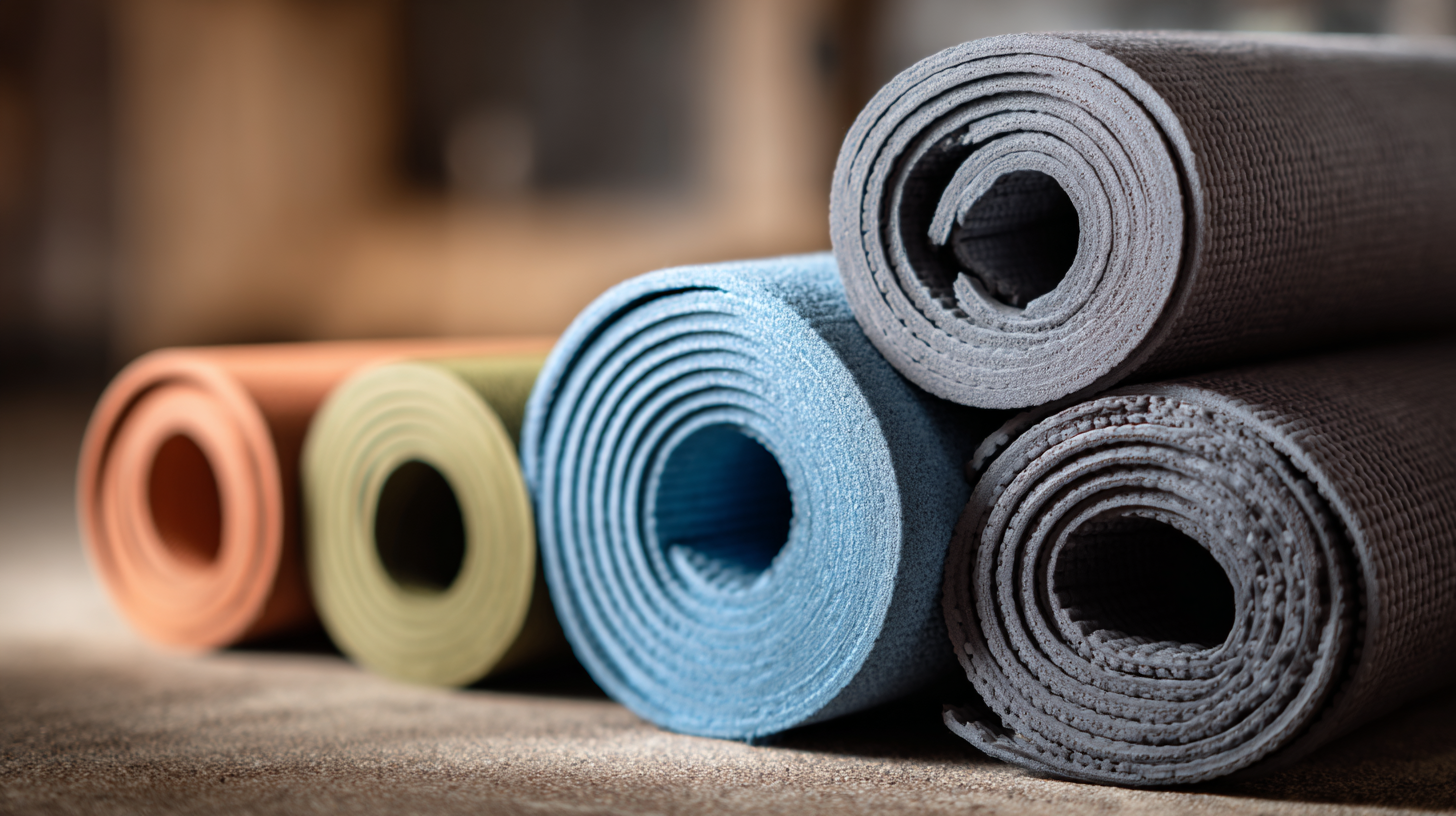
On the other hand, synthetic rubber mats, often made from materials like PVC or TPE, tend to be more affordable and accessible. A survey conducted by the International Yoga Federation highlights that about 35% of practitioners choose synthetic options for their lightweight nature and ease of maintenance. However, these mats may not provide the same level of grip or cushioning compared to their natural counterparts. Therefore, understanding these differences in material types is crucial for choosing a mat that aligns with your practice style and personal preferences, especially given that nearly 60% of yoga practitioners report that the quality of their mat significantly affects their performance.
When selecting a rubber yoga mat, several key features determine its quality and suitability for your practice. Firstly, the thickness of the mat plays a crucial role; typically, a thickness of 4 to 6 millimeters is ideal for cushioning and stability. According to a study by the Yoga Alliance, 84% of practitioners prefer mats that provide adequate support without sacrificing grip, making thickness a vital consideration. Additionally, the density of the rubber influences durability; high-density rubber mats tend to withstand more wear and tear, ensuring longevity even with frequent use.
Another important aspect is the texture of the mat, which affects traction and grip during various poses. Research from the Journal of Sports Science indicates that mats with a natural, non-toxic rubber surface provide superior grip when compared to synthetic alternatives, reducing the risk of slipping and enhancing overall safety during practice. Furthermore, consider mats that are free from harmful chemicals; the Global Organic Textile Standard (GOTS) reports that choosing mats certified as eco-friendly not only benefits your practice but also contributes to a healthier environment. Prioritizing these features can lead to a significantly enhanced yoga experience aligned with expert recommendations.
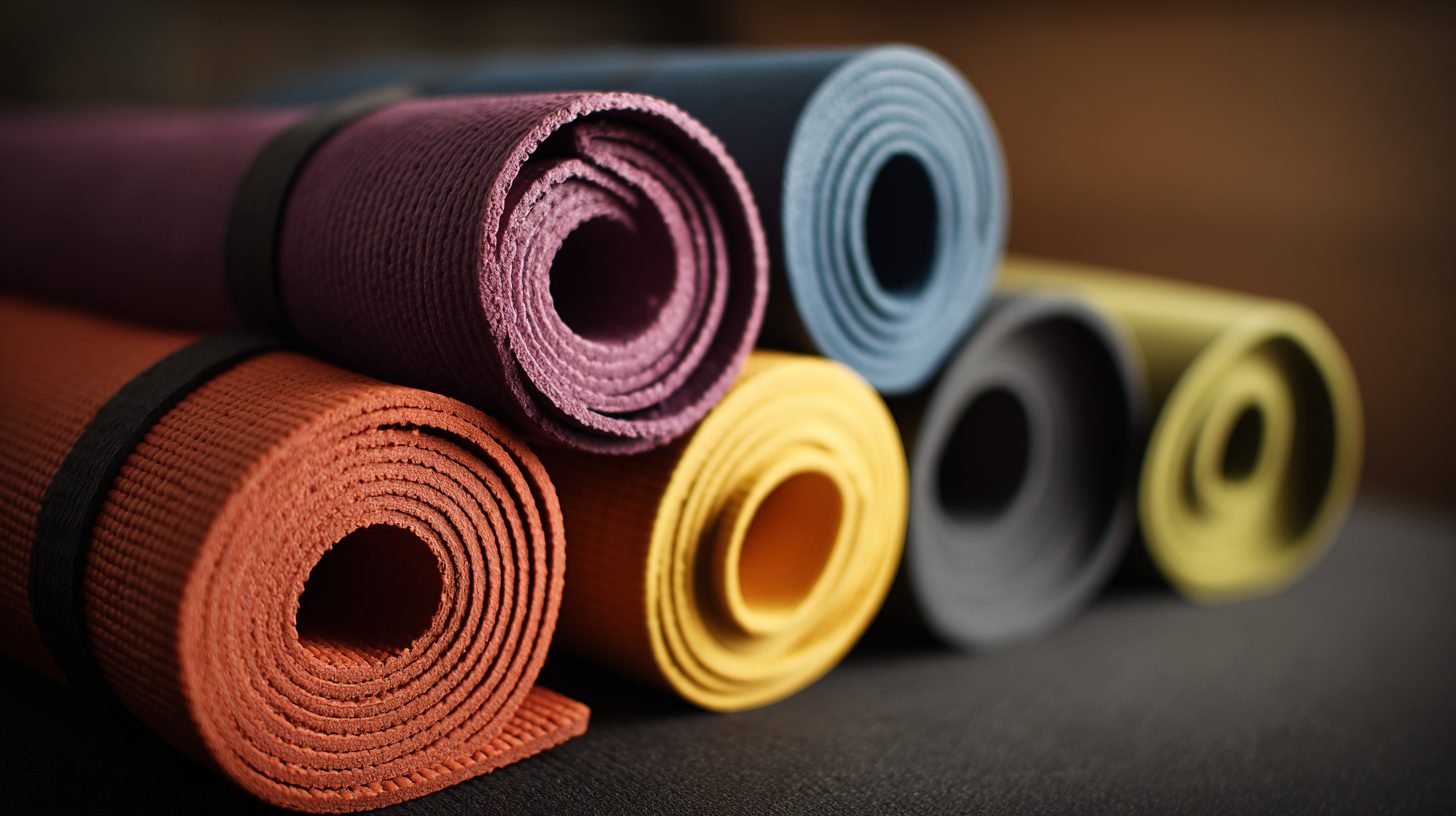
When selecting the perfect rubber yoga mat for your practice, comfort, durability, and grip are paramount. A recent survey by the Yoga Alliance found that over 70% of practitioners prioritize comfort in their mats, highlighting the significance of cushioning and support during a session. A high-density rubber mat can provide excellent shock absorption, which is crucial for long sessions or those practicing high-impact yoga styles. According to a study published in the Journal of Sports Science, optimal mat thickness for comfort typically ranges from 4 to 6 mm, ensuring that users can maintain balance without compromising stability.
Durability is another key factor to consider, as a mat that wears out quickly can lead to additional costs and frustrations. The International Journal of Sports Physiology and Performance reported that rubber mats can last up to five years with proper care, making them a sustainable choice for dedicated yoga enthusiasts. Furthermore, grip plays a critical role in preventing slips and injuries. Research conducted by the American Council on Exercise (ACE) found that mats with a textured surface significantly improve grip, especially in dynamic poses. For the best performance, look for mats made from natural rubber with a non-slip finish, as these designs consistently rank among the best in expert reviews for ensuring safety during practice.
When it comes to selecting the perfect rubber yoga mat, understanding the balance between price and quality is crucial for getting the best value for your budget. While it may be tempting to go for the cheapest option available, investing in a mat that offers durability and comfort will enhance your practice significantly. Look for mats with adequate thickness and non-slip surfaces to ensure safety and stability during your poses.
Tips: First, consider your practicing frequency. If you’re a regular yogi, investing in a high-quality mat can save you money in the long run by avoiding wear and tear. Second, don’t overlook user reviews. Many customers share their experiences and can provide insights into the performance and durability of the mat, often revealing whether a lower-priced option is worth it or simply a false economy. Finally, it’s worth checking if the mat is eco-friendly, as many quality rubber mats are made from sustainable materials, which can be a bonus for both your practice and the planet.
Ultimately, the ideal rubber yoga mat strikes a balance between affordability and functionality. By focusing on quality, you can ensure that your choice supports both your physical well-being and your commitment to yoga while staying within your desired budget.
When selecting a rubber yoga mat, user experiences provide invaluable insights that can guide your decision. Many practitioners highlight the importance of grip and stability, particularly in sweaty conditions. For instance, reviews often mention how mats with natural rubber surfaces maintain traction even during intense sessions, minimizing the risk of slipping. This feature is crucial for maintaining balance in poses like downward dog or warrior, where stability can significantly impact the effectiveness of the practice.
Another frequently noted aspect is the durability of the mat. Users share their long-term experiences, often praising mats that withstand daily use without losing their shape or cushioning. A popular choice among yogis is the eco-friendly rubber mat, which not only offers resilience but also aligns with many practitioners’ values regarding sustainability. Personal accounts also emphasize the comfort of thick rubber mats, which provide extra cushioning for sensitive joints, making them perfect for both beginners and seasoned yogis alike. These real-life feedbacks highlight the significance of choosing a mat that supports both your practice and your values.
